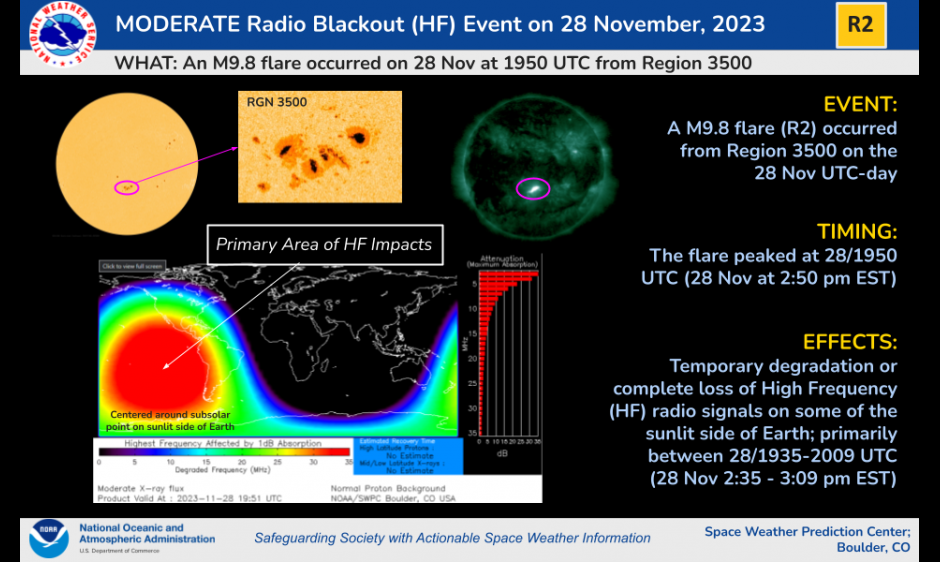
A R2 (Moderate) HF Radio Blackout Event occurred on 28 November, 2023 at 1950 UTC. The responsible flare peaked at M9.8 at 2:50 pm EST on 28 Nov as measured by the GOES-18 satellite. The flare source was NOAA/SWPC Region 3500 - a moderately complex sunspot group near the Sun’s central meridian. HF degradation was possible over the much of the eastern portion of the southern Pacific Ocean while the flare was in progress and above M5 levels. The flare was also associated with a probable coronal mass ejection (CME) as indicated by USAF solar and radio telescope observatory reports and also as suggested in GOES SUVI imagery. SWPC forecasters will examine coronagraph imagery as observations become available for CME signatures and analyze accordingly. Due to this recent activity and instability of Region 3500, the chances for further M-class flares has increased and there is now a slight chance for X-class flares. Stay informed by continuing to visit our webpage for the latest information, forecasts, and updates.